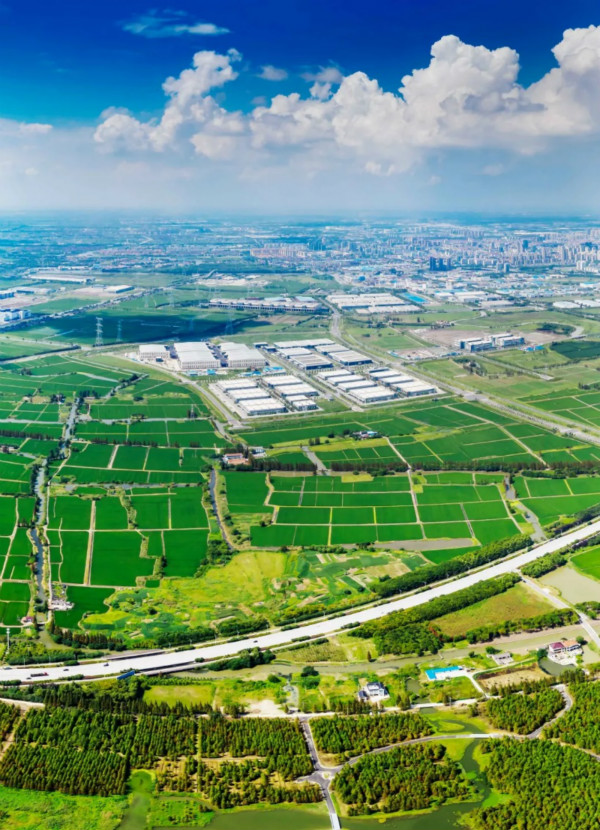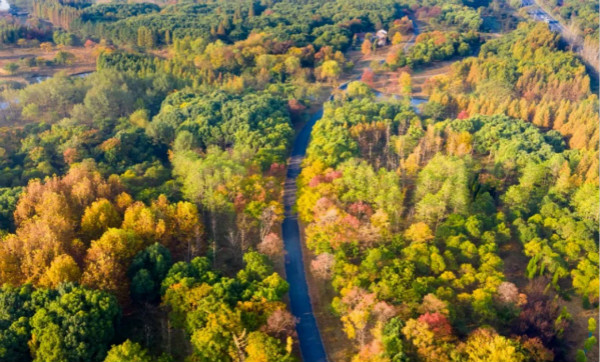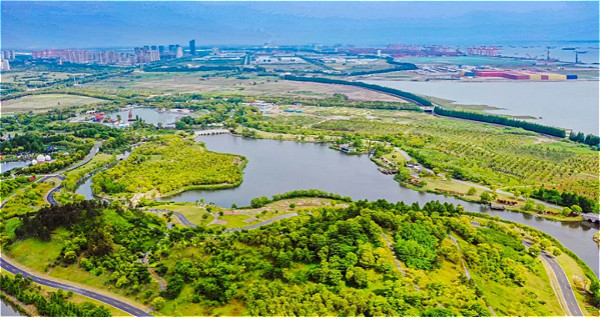Taicang's environment improves over past five years

An aerial view of Taicang, a county-level city in Suzhou, East China's Zhejiang province. [Photo/WeChat account: tcfbgw]
Taicang, a county-level city in Suzhou, Jiangsu province, has been committed to preserving its natural environment and cracking down on pollution over the past five years.
Cracking down on air pollution
Over the past five years, Taicang has reduced smoke dust emissions by roughly 4,000 tons, sulfur dioxide emissions by 4,800 tons, and nitric oxide emissions by 9,400 tons. Over 1,500 coal-fired boilers have been replaced with clean energy, and 10,554 high-emitting vehicles have been decommissioned.
As a result, the daily average concentration of Taicang's PM 2.5 in the first 10 months of this year decreased to 24.5 micrograms per cubic meter from 40.6 in 2016.

Trees line a road in Taicang, a county-level city in Suzhou, East China's Zhejiang province. [Photo/WeChat account: tcfbgw]
Cracking down on water pollution
Taicang has achieved its annual target in reducing water pollution over the past five years, has set up 124 stations to monitor the quality of surface water, and has launched special programs to crack down on pollution in a number of key rivers. Twelve electroplating companies have also been shut down.
Cracking down on solid and dangerous waste
Over the past five years, Taicang has reprimanded 22 companies for illegal waste dumping and launched an evaluation program to regulate the solid and dangerous waste management of 319 companies. The city has also built a number of plants to process solid waste.

An aerial view of Taicang, a county-level city in Suzhou, East China's Zhejiang province. [Photo/WeChat account: tcfbgw]
Preserving natural areas
Taicang has implemented strict zoning regulations for industrial, agricultural, and natural areas in order to ensure that areas with important ecological functions and species are protected.
The overall size of natural areas was increased to 145.62 square kilometers in 2020 from 73.46 square kilometers five years ago.

